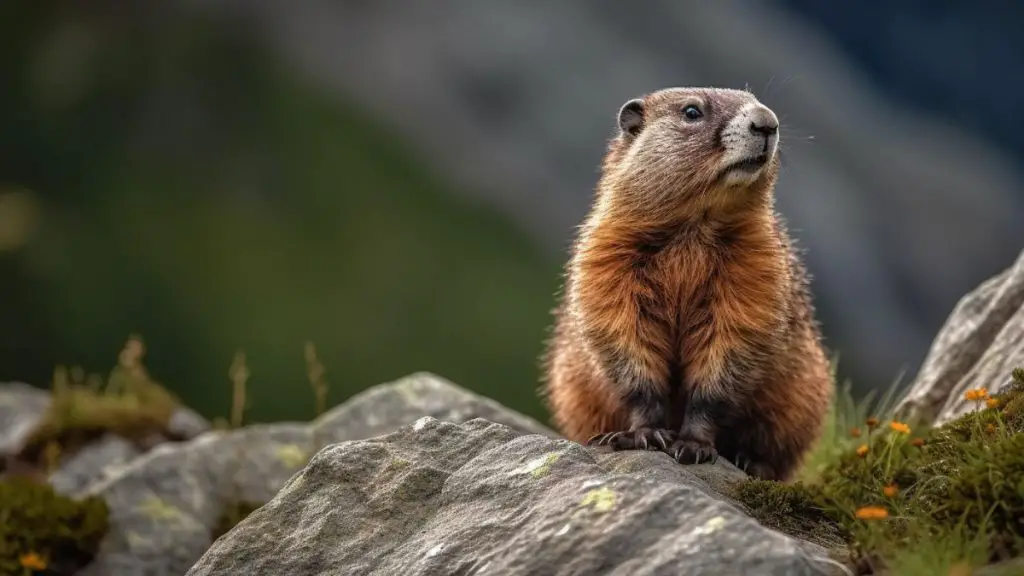Is a Marmot a Rodent? Understanding the Taxonomy and Characteristics of Marmots
Marmots are large squirrels with brown fur, large incisors, and short but strong legs. They are known for standing upright, especially when frightened, and they are also loud whistlers. Their natural habitats are in mountains and plains in North America, Asia, Canada, and Europe.
While the above information gives you an idea of the animal, it’s not enough to help you categorize or classify them well. Therefore, it’s crucial to understand the taxonomic classification of the marmots so you can study them better.
The article covers the taxonomy and morphological traits of the marmots to help you understand them better.
Is Marmot a Rodent?
Most people often wonder, is a marmot a rodent? This is because most popular rodents are small, like rats, house mice, Mus, and hamsters, to name a few.
The short answer is yes. Marmots are rodents and among the largest members together with the groundhogs. They weigh between 6.5 and 15.5 pounds (3 and 7 Kg) with some species weighing more than others. The Olympic marmots are among the larger ones weighing up to 13.8 pounds (6.3 kg).

Despite their big size, which is not a common attribute of a rodent, they have several characteristics that other rodents do. Among the things that help in Marmot classification is the sharp single pair of upper and lower incisors that they use to gnaw on various types of vegetation.
They also have strong paws, which rodents have, and they use them to burrow underground tunnels. They breed in these tunnels and it’s also where they store their food and hibernate to get away from extreme cold in winter.
Taxonomy of Marmots
Animal taxonomy is one way to learn about marmots through their scientific studies. A reason this is the much-preferred method compared to animal classification is that it is more detailed.
Marmot characteristics put them in the family Sciuridae, a family that includes various sizes of rodents, some small and others medium-sized. The family is more common under the name squirrel family, which has three members.

Their scientific name or genus is Marmota, and they belong to the tribe Marmotini. The tribe contains six living genera, with the marmots being the largest and the most popular of the others.
Tree squirrels, ground squirrels, and flying squirrels are the three members of the squirrel family. Marmots are under the subfamily Xerinae and under the tribe martini, which is part of the ground squirrels.
Marmots are also classified under the order Rodentia, which includes all rodents. Under the order, you can study marmots and their characteristics and understand how they’re classified within the order.
There are several extinct species of marmots whose fossils date back to the Miocene Epoch, a time between 13.8 and 5.3 million years ago. These extinct species and the order Rodentia make up the clade, Simplicidentata.
There are various phylogenetics studies on marmots to help understand more about their relationship with other animals. Genetic analysis is performed on the animal as well as a comparative analysis.
The order Rodentia has several suborders. They include;
- Suborder Anomaluromorpha – It has three families under it, including Anomaluridae, where scaly-tailed squirrels are members.
- Suborder Castorimorpha – It has two superfamilies and three families.
- Suborder Hystricomorpha is among the largest containing several infraorders, parvorders, superfamilies, and families. Under this suborder are where most rats and guinea pigs are found, along with other popular rodents.
- Suborder Myomorpha has two superfamilies and ten families, and gerbils are found in it under the family Muridae.
- Suborder Sciuromorpha, which has three families, and it’s where the squirrels are found under the family Sciuridae. Marmots belong to this suborder, along with chipmunks and prairie dogs.
Comparison of the taxonomic classification of marmots with other animal groups
Despite the marmots belonging to the same family as the prairie dogs, they belong to a different genus. At the same time, the marmots are of the genus Marmota, while the prairie dog is of the genus Cynomys.
Also, the chipmunks whom they share family and subfamily belong to the genera Tamias. Other than that, they differ with them in morphological traits, like in size. The squirrels are smaller, not only than the marmots but also the prairie dogs.

Apart from the animals in the same suborder, they also differ with scaly-tailed squirrels, which they’re in the same order with.
Morphological Traits
If you see the marmots for the first time, you’ll notice how they outwardly resemble most rodent species. They are, however, large, weighing up to 7kg/15.5 pounds, and their forelimbs are shorter than their hind.
Marmots are covered in fur, including ear parts, and have short but strong legs. These features qualify them for life in cold environments, though they hibernate in their burrows when winter comes. Hibernating is among their wildlife behaviors, and they survive on fat reserves in their bodies.
Their bodies are bulky, and grow to lengths between 30 and 76.2 cm (11.8 and 30 inches.). The Olympic marmot, the largest of the marmot species, can grow up to 81 cm (32 inches).

Their tails are short and often as bushy as their bodies and can measure between 10 and 25 cm (4 and 9 inches.) The long-tailed marmot, also called the golden marmot, can grow a tail up to 28 cm (11 inches).
The fur colors of the marmots vary with species though they alternate between brown and gray. These rodents may also have white, black, brownish red, or yellow streaks on their belly, as the yellow-bellied marmots do.
Marmot morphological traits differ from those of other animal groups

In a comparative analysis, marmots’ morphological traits differ from other animal groups in various ways.
- For one, the marmots have plump and sturdy bodies, which most rodents don’t. The body stores fat that is used later during winter when they hibernate.
- They also have more fur on their body and face, which is an evolution that suggests they’re better prepared for cold environments. They are also significantly bigger than most rodents, with bigger bodies and heads.
- Other things to consider in a marmot vs rodent comparison are their predators. Rodents are prey to hawks, coyotes, foxes, and falcons, which also prey on the larger rodent, the marmot.
- On rare occasions, humans also eat the marmot, which is used to make a Mongolian dish called boodog.
- However, marmots can infect humans with bubonic plague caused by Yersinia pestis. Therefore, persons handling them must be careful and wear protective gear.
Rodents play a crucial role in the health of forests and grasslands. They help in pollination, while others spread seeds in forests increasing the growth of trees. Most importantly, when they burrow, they enrich the soil allowing better growth.
Marmot teeth with those of rodents and other animal groups
You need to understand the marmots’ teeth in order to fully figure out their comparative anatomy. Their jaws are large and hold single pairs of scissors teeth on the upper and lower jaw. These teeth continue to grow and are called erodent or aradicular hypsodont. The teeth are unrooted but don’t stop growing, even though they are continuously eroded as the rodents use them.

Marmots have two incisors on the upper and lower jaw and have no canines. It also has six premolars and 12 Molars on all jaws, making a total of 22. Most rodents, like caviomorphs, have two incisors and premolars on each jaw. They also have 12 molars which makes a total of 20 teeth.
If you’re fascinated by the classification of marmots as rodents, you might want to explore more of their unique traits and behaviors. At Rodents Fact, we have informative articles on the differences between marmots and prairie dogs and the methods used for marmot trapping. Our article on marmots vs prairie dogs explores the physical characteristics, habitats, and behaviors of these two intriguing rodents. Meanwhile, our article on marmot trapping explores the methods used to control and manage populations of these rodents. So, if you want to expand your knowledge about the diverse world of marmots and their management, be sure to check out our articles on marmots vs prairie dogs and marmot trapping.FAQs
Following are the frequently asked questions on Marmots. Keep reading.
Q1. What other animal groups are closely related to marmots?
Some animals closely related to marmots are ground squirrels, prairie dogs, and chipmunks. These animals are in the same family as the marmot under the suborder Sciuromorpha.
Q2. What are the similarities between marmots and rodents?
The similarities between marmots include their jaws and large incisors, which they use for gnawing and self-defense. Other than physical similarities, they share the same predators, which include eagles and coyotes.
Q3. Are marmots considered pests like some rodent species?
Yes. Marmots are considered pests by most people, especially farmers. They use their strong claws to burrow into the soil, which can damage it and cause erosion. They can also feed and damage most garden vegetables in a short time.
Conclusion
Some of the main points from the article include;
- Marmots are rodents and they’re among the largest members.
- Their taxonomy puts them under the family Sciuridae in the order Rodentia.
- Marmots’ morphological traits suggest they’re well prepared for winter with their fur-covered ears and bodies.
With an understanding of the taxonomic classification and characteristics of the marmots, you can understand their evolutionary history better. Also, when studying them you know where they’re grouped and their characteristics.
There are more studies and official research papers you should read to understand marmots better. They are important to the ecosystem and you can appreciate them by taking care of the environment, especially where they live




